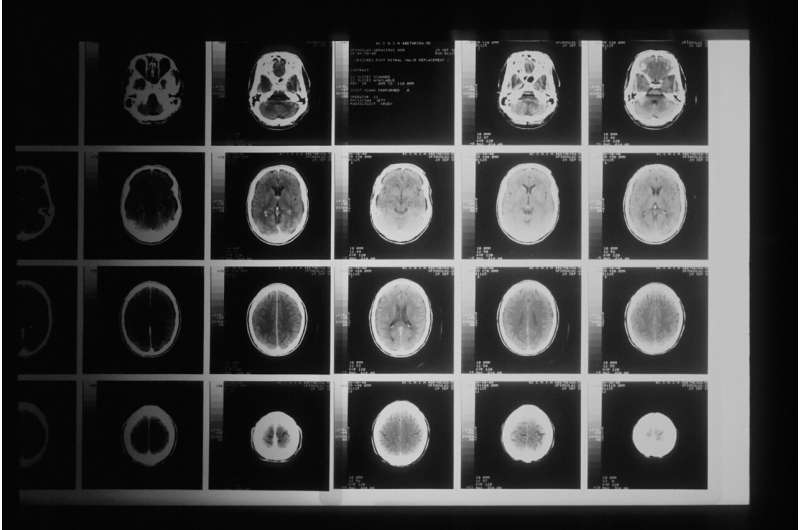
Immunotherapy has revolutionized treatment for many forms of cancer, but glioblastoma multiforme (GBM), the most common and deadly form of brain cancer, has remained untouched. GBM tumors are sometimes referred to as “cold”—that is, the immune system has a difficult time detecting and targeting them, allowing tumor cells to continue to grow unchecked, even with the advent of immunotherapy drugs.
A study led by investigators at Brigham and Women’s Hospital presents a new approach for turning up the heat and setting up immunotherapy treatment for success. When researchers used biodegradable implants loaded with a drug that can activate the STING pathway—a pathway known to stimulate the immune system—in preclinical models, they saw evidence of immune activity and a robust immune effect. Their findings, published in PNAS, suggest that activating the STING pathway could help make GBM more susceptible to immunotherapy treatment.
“Glioblastoma tumors are resistant to therapies that work well in other cancers, so our goal here is to take down the shield that the tumor is using to protect itself,” said corresponding author Sean Lawler, Ph.D., formerly of the Harvey Cushing Neuro-Oncology Laboratories and the Department of Neurosurgery at the Brigham. Lawler is now at Brown University.
“Our promising findings point to a new approach of using drug-loaded brain implants to change the tumor microenvironment to support combination therapies, including immunotherapies,” said co-author E. Antonio Chiocca, MD, Ph.D., chair of the Department of Neurosurgery at the Brigham.
The STING pathway gets its name from the stimulator of interferon genes (STING) protein, which is critical for helping cells sense pathogens and cancer cells. While STING is well known, it had not been examined in detail in the context of GBM. One of the challenges of treating GBM is that tumors are hidden behind the blood-brain barrier (BBB), which prevents drugs from crossing from circulating blood into the fluid of the central nervous system. To overcome this delivery challenge, investigators from the Brigham’s Department of Neurosurgery collaborated with experts from the Wyss Institute, who developed a biocompatible hydrogel that could be loaded with a drug that activates STING and is released over time. If successful, such a hydrogel could be implanted directly into the brain during surgery to remove a patient’s tumor.
“We show here that the activation of the STING pathway completely remodels the immune environment of the tumor and attracts cells that will get rid of it in mice and will produce long-term immunity against relapse. We were further excited to see that human GBM explants respond to STING agonists by secreting a wide array of cytokines, demonstrating the pathway is active in human tumors and can be used as a new approach to enable immunotherapy to work in GBM,” said first and co-corresponding author Gilles Berger, PharmD-Ph.D., now an associate professor at the University of Brussels, in Belgium.
The team tested this approach in mouse models of GBM, finding that the treatment promoted long-term survival and immune memory. In the paper, they describe a shift in the tumor immune landscape after treatment, with an influx of innate immune cells including inflammatory macrophages, neutrophils and natural killer (NK) cells. Further experiments showed that NK cells were critical—depleting these cells diminished the response.
The authors note that while their findings are promising, stimulating a strong immune response in the brain must be done with great caution. The study is an important proof of principle, but further refinement, optimization and rigorous testing of the gel delivery system are needed. The authors also want to test different drug combinations to determine what approach may be most effective.
Lawler credits the progress to date to the collaboration between neurosurgeons, cancer researchers and biomedical engineers.
Source: Read Full Article
